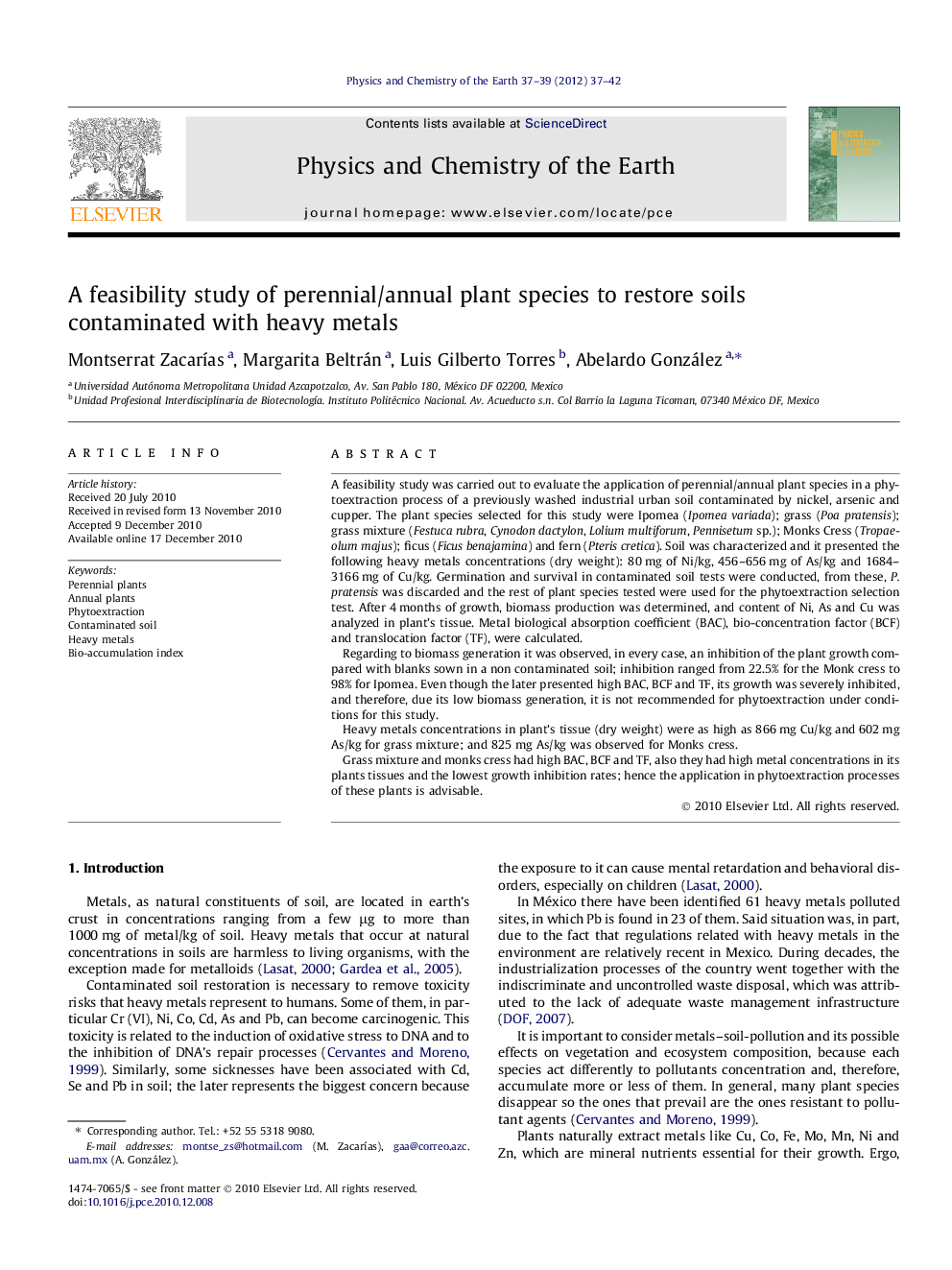| کد مقاله | کد نشریه | سال انتشار | مقاله انگلیسی | نسخه تمام متن |
|---|---|---|---|---|
| 4721184 | 1639371 | 2012 | 6 صفحه PDF | دانلود رایگان |

A feasibility study was carried out to evaluate the application of perennial/annual plant species in a phytoextraction process of a previously washed industrial urban soil contaminated by nickel, arsenic and cupper. The plant species selected for this study were Ipomea (Ipomea variada); grass (Poa pratensis); grass mixture (Festuca rubra, Cynodon dactylon, Lolium multiforum, Pennisetum sp.); Monks Cress (Tropaeolum majus); ficus (Ficus benajamina) and fern (Pteris cretica). Soil was characterized and it presented the following heavy metals concentrations (dry weight): 80 mg of Ni/kg, 456–656 mg of As/kg and 1684–3166 mg of Cu/kg. Germination and survival in contaminated soil tests were conducted, from these, P. pratensis was discarded and the rest of plant species tested were used for the phytoextraction selection test. After 4 months of growth, biomass production was determined, and content of Ni, As and Cu was analyzed in plant’s tissue. Metal biological absorption coefficient (BAC), bio-concentration factor (BCF) and translocation factor (TF), were calculated.Regarding to biomass generation it was observed, in every case, an inhibition of the plant growth compared with blanks sown in a non contaminated soil; inhibition ranged from 22.5% for the Monk cress to 98% for Ipomea. Even though the later presented high BAC, BCF and TF, its growth was severely inhibited, and therefore, due its low biomass generation, it is not recommended for phytoextraction under conditions for this study.Heavy metals concentrations in plant’s tissue (dry weight) were as high as 866 mg Cu/kg and 602 mg As/kg for grass mixture; and 825 mg As/kg was observed for Monks cress.Grass mixture and monks cress had high BAC, BCF and TF, also they had high metal concentrations in its plants tissues and the lowest growth inhibition rates; hence the application in phytoextraction processes of these plants is advisable.
Journal: Physics and Chemistry of the Earth, Parts A/B/C - Volumes 37–39, 2012, Pages 37–42